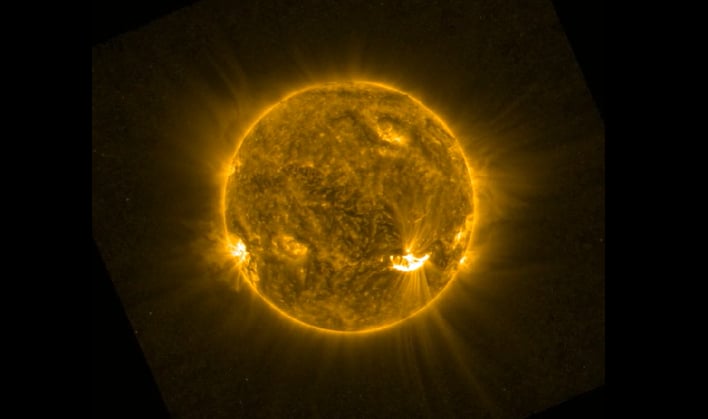Fiery Video Shows A Solar Snake Slithering Across The Sun At 380,000 MPH

The European Space Agency's (ESA) Solar Orbiter is billed as "the most complex scientific laboratory ever to have been sent to the Sun." The spacecraft is helping to unravel the mysteries of the Sun that have puzzled scientists for centuries. Solar Orbiter is able to do this by being able to take images closer to our home star than any spacecraft before. In a recent video created using images captured by the spacecraft, scientists spotted a snake-like tube of cool plasma suspended by magnetic fields slithering about.
The snake was seen gliding across the Sun on September 5, 2022, as the Solar Orbiter approached the Sun for a close pass which took place on October 12th. ESA describes plasma as "a state of matter in which a gas is so hot that its atoms begin to lose some of their outer particles, called electrons." Due to the loss, gas becomes electrically charged and in turn, is susceptible to magnetic fields. Because the Sun is so incredibly hot, more than a million degrees centigrade, all of the gas in its atmosphere is a plasma.
"You're getting plasma flowing from one side to the other but the magnetic field is really twisted," explained David Long of the Mullard Space Science Laboratory (UCL). "So you're getting this change in direction because we're looking down on a twisted structure."
The video showcasing the snake was created as a time-lapse of images from the Solar Orbiter's Extreme Ultraviolet Imager. While it appears the snake slithered rapidly across the Sun, it took more than three hours to complete its journey. However, due to the immense distance it traveled, it also means it was traveling at around 170 kilometers per second, or about 380,000 miles per hour.
The snake's origin was from a solar active region that later erupted. The eruption sent billions of tonnes of plasma hurling into space. The blast was one of the most intense solar energetic particles events ever captured by the spacecraft's Energetic Particle Detector (EPD).
It is the data collected Solar Orbiter during events like this, that will allow scientists to gain a better understanding of solar activity and how it creates 'space weather'.

